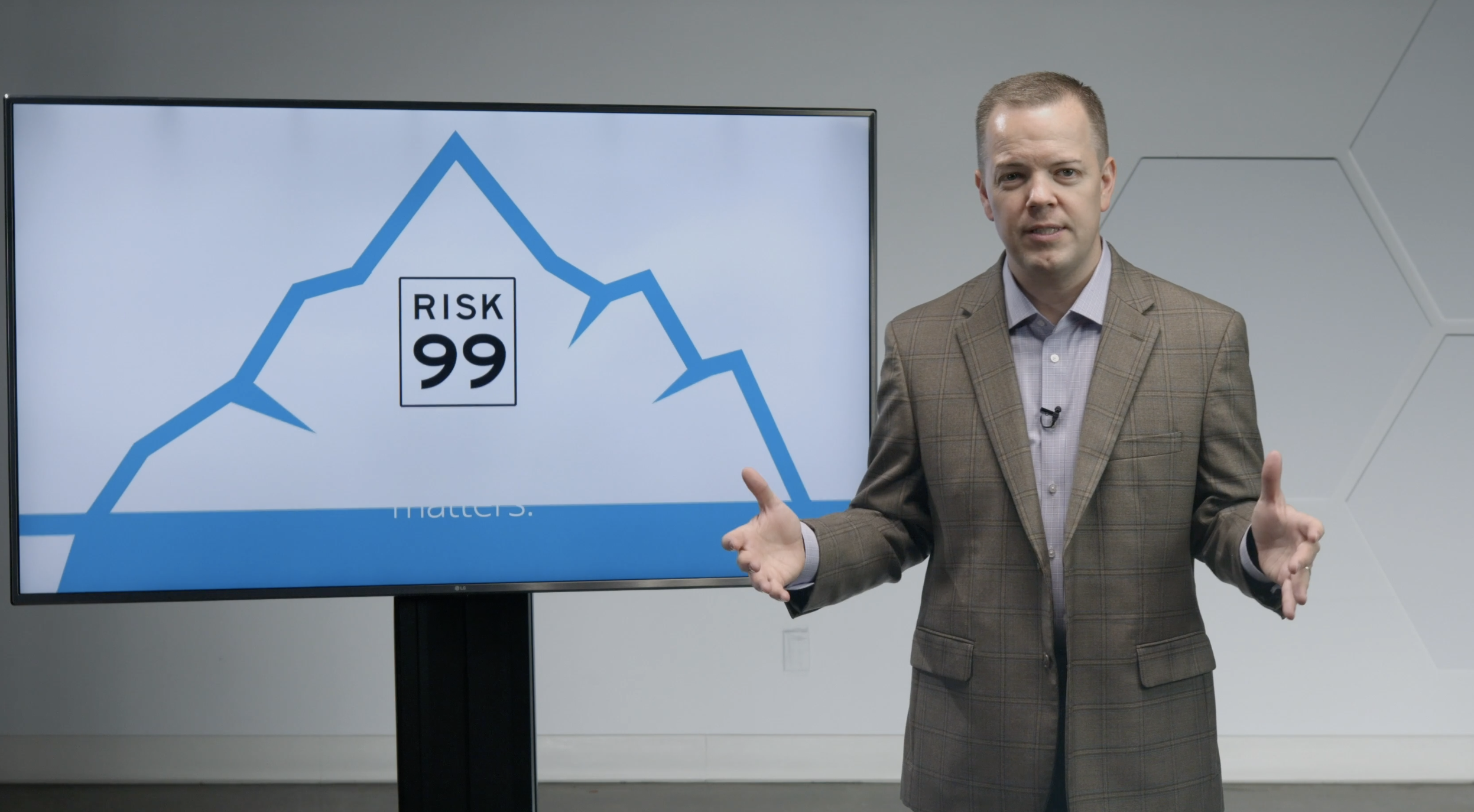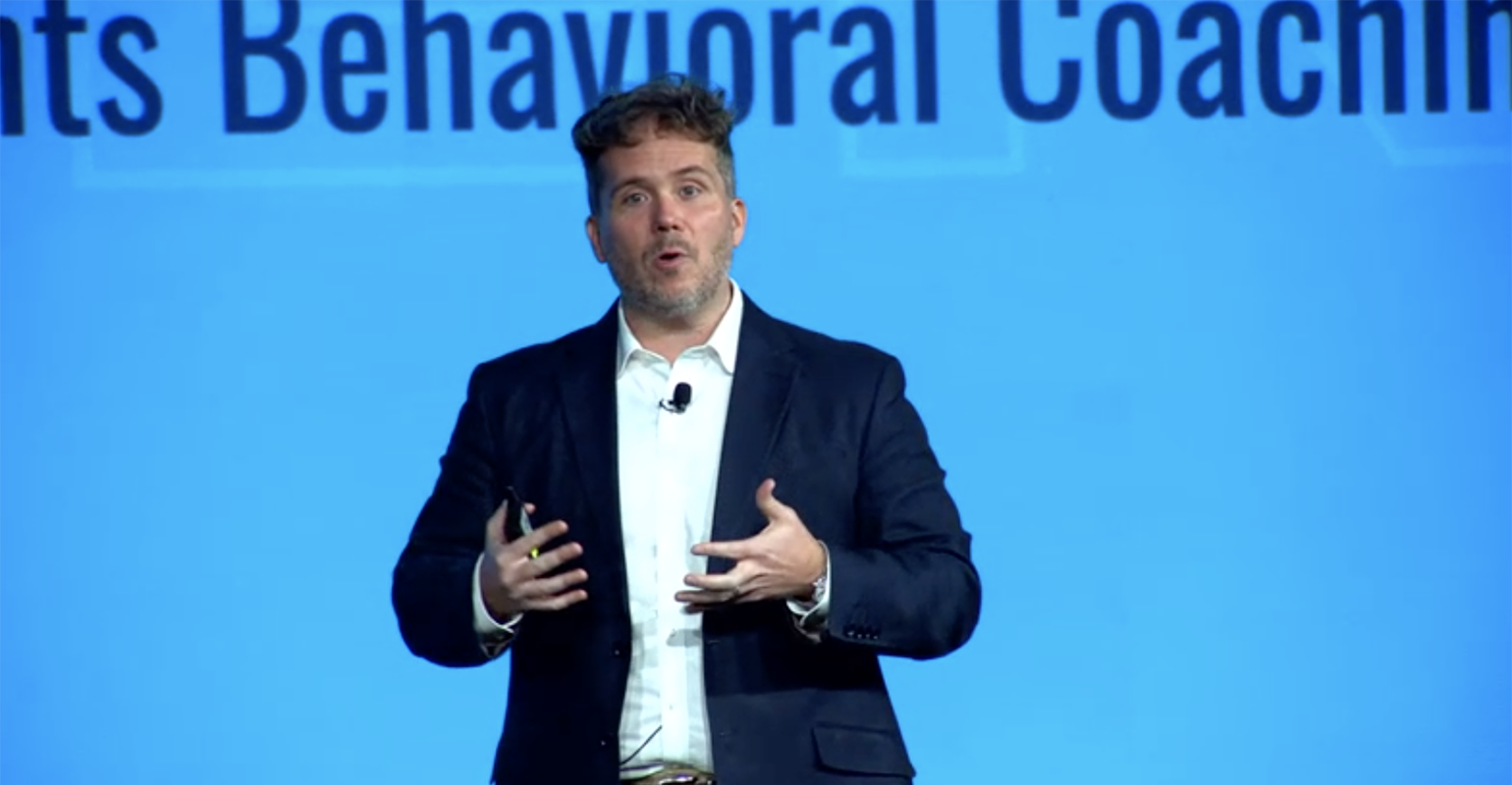The study of risk in financial services has been a “modern” concept for decades, and it has grown to encompass dozens of risk-related elements. When it comes to understanding and measuring risk specifically within wealth management, things have really heated up only in the past 10 years.
In the classic investing book A Random Walk Down Wall Street, renowned Princeton economist and professor emeritus Burton Malkiel wrote that “both within academia and on the Street, there has long been a scramble to exploit risk to earn greater returns.”
“Risk,” he said, “is a most slippery and elusive concept. It’s hard for investors—let alone economists—to agree on a precise definition.”
Nonetheless, risk evaluation and profiling, once the province of institutional portfolio managers, has become a standard first step in portfolio construction for individuals in the past 10 years. Risk measurement has steadily increased in importance across many facets of the client lifecycle and is now being marketed and sold as everything from a means to generate new leads to a way to nudge financial behavior. Concurrently, what were once stand-alone risk metric firms have been bundled into wealth management platforms offering a variety of services that collect increasingly sophisticated data on clients.
Still known for distilling risk into a single number, Riskalyze has added trading and financial planning features to its platform. Meanwhile Orion Advisor Solutions and Morningstar have acquired risk evaluation specialists HiddenLevers and FinaMetrica, respectively. Orion also brought over the risk evaluation capabilities of Brinker Capital in its acquisition of the firm last year. Earlier this year, TIFIN acquired risk-profiling firm Totum Risk, as it continues its mission to bring personalization and modular risk evaluation to wealth management.
Riskalyze, Orion, Morningstar and TIFIN aren’t the only risk evaluation providers available to financial advisors. BlackRock’s Aladdin software comes with risk analysis features, and many advisors craft their own risk tolerance questionnaires or deliver home office-approved risk surveys to clients.
The Evolution of Risk Evaluation Firms
A decade ago, Riskalyze had an idea: turn risk into something accessible and meaningful for the individual investor and integrate it everywhere. Soon advisors were running portfolios through the firm’s risk evaluation software and returning a simple number—between 1 and 99 and displayed in a speed limit-shaped sign—to their clients. The Risk Number, as it was called, was used by advisors to turn leads into paying clients, convince clients to move assets from one advisor to another and to defend advisors from regulatory action or disgruntled clients.
The firm was hardly the first to make a business case for risk. BlackRock began selling its risk measurement technology, Aladdin, over a decade earlier. The asset management firm built the tool in 1988 for large institutional investors. Several years later, BlackRock created a version of its service for wealth managers who were eager to provide the same insights to individual investors.
Initially, both firms used risk evaluation as a way for wealth professionals to monitor the risk within their portfolios, particularly as the industry transitioned from an era based on products to one based on overall goals. Aladdin continues to provide portfolio-related risk evaluation, according to Woo Fung Kwong, managing director and co-head of the Aladdin wealth tech business.
Riskalyze had evolved its approach, however. Instead of just applying its risk number to portfolios, it applied it to end investors, too, a figure it calls the “personal Risk Number.” Advisors using the tool began matching the risk profile of a client with the risk characteristics of a portfolio, weighing the feasibility of meeting client-set goals and factoring in a client’s own financial behavior.

Riskalyze CEO Aaron Klein standing next to an example of its risk number speed limit sign at its 2020 virtual conference.
Meanwhile, HiddenLevers was well on its way to measuring portfolio risk against external scenarios, and Brinker Capital eventually began working on a risk profile tool, called Tulip, that looked at behavior and its relationship to market volatility. Both firms were acquired by Orion Advisor Solutions in the past 18 months.
FinaMetrica, founded in 1998, had also been providing advisors with a method for measuring portfolio risk, and, after Morningstar acquired its technology last year, the financial services information firm rolled out its Portfolio Risk Score to be used in conjunction with a client’s own Risk Comfort Range as part of the recently launched Risk Ecosystem feature.
TIFIN too, announced its plan to build “a personalized advice platform for growth,” according to CEO Vinay Nair, following its acquisition of Totum Risk earlier this year.
Today, risk evaluation features are more likely to be integrated into a larger wealth management platform provider than they are to be a stand-alone offering. Even Riskalyze, still an independent company, works tirelessly to integrate its features with as many software providers as it can, with 36 listed on its website as of mid-August.
The Risks of Incomplete Risk Evaluation
Just as risk evaluation covered more corners of the advisor’s desktop, its growth has fueled debates between psychologists and economists. While in agreement that the expansion of risk evaluation from portfolio to persona is beneficial, academics and businesses in wealth management differ in their approaches to risk.
What was rarely up for debate, however, was the brokenness of the wealth management risk evaluation toolkit. “We were motivated by the archaic risk preference frameworks used by the industry,” said Riskalyze co-founder Mike McDaniel, in describing what motivated the launch of his firm. “Good advisors were trying to use subjective questionnaires to assign clients to subjective investment objectives like ‘moderate,’ ‘conservative’ or ‘moderately conservative.’” He noted that doctors do not prescribe medications based on the same ambiguous terms still used by many financial advisors today.
“Unfortunately, there’s no ‘silver bullet’ approach to risk management that financial advisors can rely on,” said Ben Collins, senior director for the financial services industry marketing division at Sage Intacct, a provider of cloud financial management software for small and medium-sized businesses. He maintains that blending quantitative and qualitative analyses is best, but even that approach can be inconsistent because there are “no firm regulatory guidelines in place on risk measurement methods.”

Daniel Crosby speaking at the 2021 Orion Ascent conference.
Daniel Crosby, the chief behavioral officer at Orion, who has a Ph.D. in psychology, breaks risk into three categories: risk capacity, a measurement of how much risk someone can take; risk tolerance, which looks at a person’s long-term willingness to take on risk-reward trade-offs; and risk composure, a measurement of how people think about risk-taking based on their emotional state. Risk tolerance doesn’t change much as investors encounter external stressors, he said, but emotions can affect investors’ risk composure.
In an effort to help advisors help their clients with financial behavior, Orion is developing a measure of attitude toward money, based on the “composure” tenet of risk, said Crosby.
“In the same way that a fish doesn’t know it’s wet, each of us grows up in a sort of financial bubble based on our families of origin and our cultures of origin,” he said. “We don’t always have a lot of different money attitudes to compare them to.” By measuring those bubbles and understanding them better, Orion hopes to provide advisors with the means to guide their clients along more financially responsible paths.
“We needed a tool that accounted for all facets of risk-taking behavior and could bridge the divide between research and practice,” said Crosby. Academia is too focused on risk tolerance, while advisors had a hard time understanding why—if risk tolerance was relatively static—their clients’ daily risk-taking fluctuated.
But Orion may have difficulties relying completely on the stated preferences of clients. While a psychological approach would suggest that stated preferences are likely to be followed, an approach based on economics relies on revealed preferences, said Shachar Kariv, Ph.D., a professor of economics at the University of California, Berkeley, and co-founder of the risk evaluation firm Capital Preferences, which serves wealth management, asset management and insurance firms.
Risk evaluation in wealth management today is more about checking boxes and staying in the good graces of compliance than actually understanding a client, he said. And it’s an approach ripe for change.
“We really need to aspire to something scientific, like a blood sample,” he explained. “Knowing your client is the only competitive advantage.”
Kariv said that advisors should be capturing and measuring clients’ risk preferences based on real-life investing and financial activities. A client stating his or her risk tolerance is less reliable than uncovering his or her risk tolerance by measuring the financial decisions made by a client.
It’s a massive challenge, he said, and it has befuddled even the most data-and-analysis-motivated firms, like Amazon, despite their deep understanding of human psychology and financial behavior.
“Amazon doesn’t sell financial portfolios because they still haven’t figured out exactly how to understand the preferences of the client,” he said. “They have their methods to understand the preferences of consumers, because of naturally occurring data [based on tracking frequent purchases].” Even Amazon, however, lacks the naturally occurring data it needs to understand clients enough to predict that it can successfully sell financial products to investors, he said.
Other risk evaluation tools, like Aladdin, focus less on human behavior and more on the behavior of investments. “Risk management doesn’t exactly tell you what to do, because that depends on your market views and how good your research and output generation and all those things are,” said Kwong. “It does make everything more consistent in the sense that whatever happens, you are not surprised by it.”
But even a risk evaluation strategy looking at investments provides comfort, a psychological benefit for investors. “It’s really important for advisors to see risk—not as a compliance thing, only—but also as a way to differentiate how they engage with their clients,” he added.
“The kind of tools that the market is using are broken,” said Kariv. “We have invested a lot of work in creating products, but the science of understanding clients really lags behind.”
Whether it’s psychology or economics that provides advisors with the breakthrough they need to understand their clients and their risk preferences, the need is there. Today’s tools can evaluate investments. Evaluating people is a bigger task—and one that is of upmost interest to the wealth management industry.





